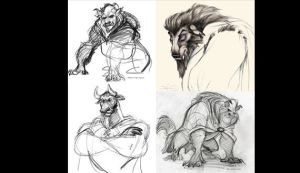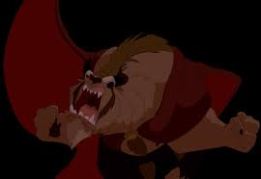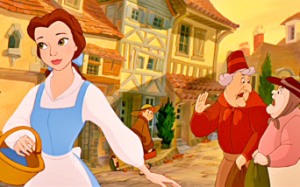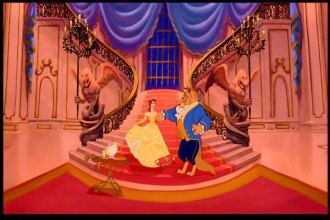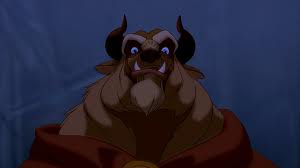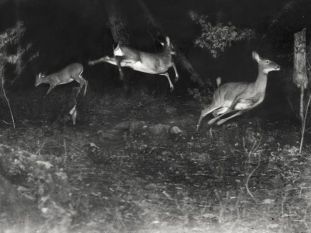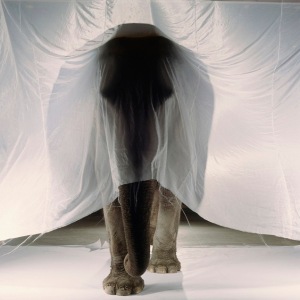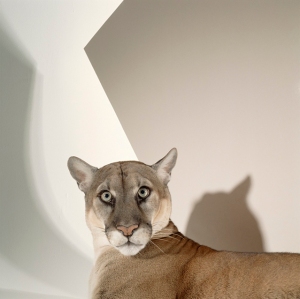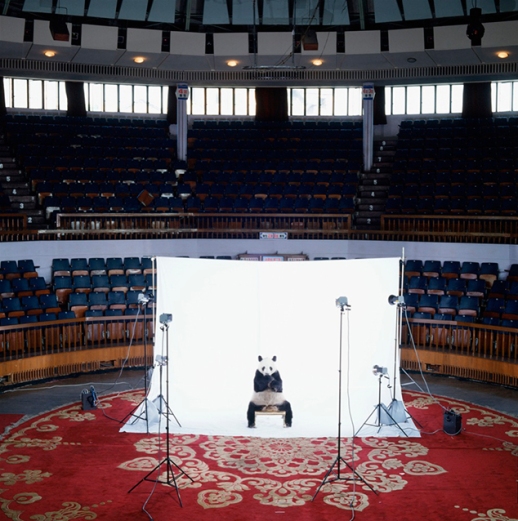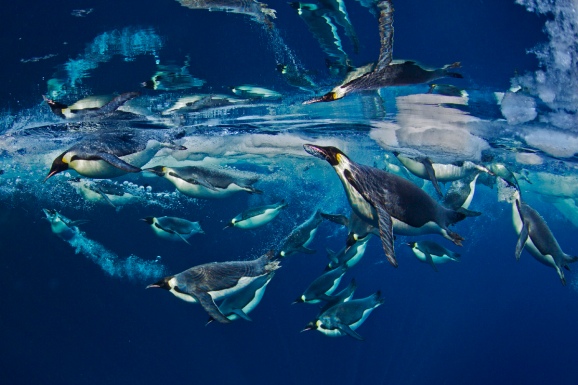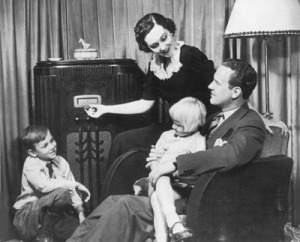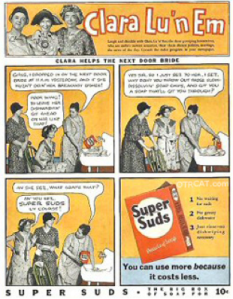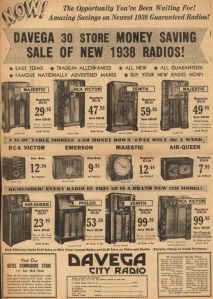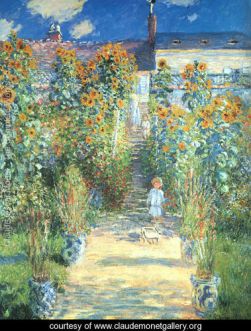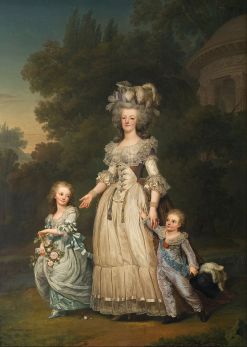Beauty and the Beast is one of my favorite childhood movies. The animation, the characters and the songs make it easy to fall in love with. The story between a beautiful girl who doesn’t fit in and a beast who has been cursed till he learns to love coming together to form a classic love story has earned its place in film history.
This animated film was released in November of 1991 after 3 years of intense work by a large, talented team of directors, producers, animator and actors. Leading this team was co-directors Gary Trousdale and Kirk Wise. The idea of creating a film based on this classic story began in the 1930’s and was revisited again in the 1950’s, but it was not until this new group of filmmakers united in the 1980’s that the idea became formed enough to be possible. Most of these artists were fresh out of art school and they were trying to develop the next generation of art that was on par with some of the original Disney Classics such as Snow White (1937).
The first writing of the Beauty and the Beast began with a non-musical form with a much darker vision in 18th century France. After six months of work on this vision the preliminary storyboards were return to the Chairmen at Disney and they were rejected. The movie was not going in the direction they wanted so they switched up the team and writer Linda Woolverton was added in order to get the project fueled. This was her first time developing a screenplay for a full-length animated film but she did a wonderful job. I think with her combination of witty lines and new inclusion of songs it helped lift up the movie and create development for the backstory that makes everything believable. Woolverton later went on to develop the screenplay for The Lion King (1994), and was the writer of the recently released Maleficent (2014).
At this point they saw that music would be an essential part of this film. This is when Alan Menken and Howard Ashman were added to the film. This is the point where the project began to take place and develop in to the classic that it is today. With Alan Menken as the composer and Howard Ashman as the lyricist, they transformed the project into a musical. This team had just finished working on The Little Mermaid (1989), and the directing team was hoping that they could continue that success in this film. They were able to far exceed the director’s expectations. In the end they developed 25 minutes of original songs for the film, and of the 84 minutes of film, only 5 minutes are without any music score. They were able to develop songs that created meaning and explained the story’s emotions in a way that could not be done during the early tries at the film. These include Be Our Guest, Something There, Belle and Tale as Old as Time.
Another change that was created with the new team was the idea that the household items in the enchanted castle would be the staff that was in the house at the time of the curse. This created a new dynamic to the film allowing for light comedy to inputted by many secondary characters. Some of the most well known of these characters is Cogsworth and Lumiere. Cogsworth, a clock, was an executive in the household keeping everyone on schedule and in line while Lumiere, a candelabra, was the fiery maître d’ who loves to serve. These characters helped create a depth to the story and communicate a wider range of emotions. I think these characters helped connect the audience with the Beast, even when he seemed very cold. In this fun clip below Cogsworth explains the artistic influences of the castle!
The Beast is a fine example of what animation can create. He is not just a bear, or a buffalo or wolf, he a combination of many various creatures to form something completely new. It is an amazing art form to develop a creature like this in the animated world. If this was done in the traditional live action form it could take many hours of costuming to get a similar effects. The animation also allowed for emotions to be easily expressed in the Beast’s face that may have been difficult to do in a costume.
To create the Beast’s scary animalistic voice, the sound editors took Robby Beson’s voice of the Beast and altered it with the growls of lions and panthers to create the sound heard until the Beast it transformed back into a human and is not longer altered.
Besides, the emotions of the beast, animators were also able to connect him and Belle through the use of color. Using a technique called color-coding, Belle and the Beast were the only two characters to wear the color blue. This color was used to symbolize their isolation and signify how different they were from everyone else. During the scene where Belle is exploring town and the towns people are remarking about how odd she is, the blue color of her dress stands out from the more mundane browns, greens and reds that everyone else is wearing. Until she meets the Beast no one else shares the color. I think it is a great way to link the characters and show that even though she was in a town full of people, she is just as isolated as the Beast in his castle. This color-coding is continued with Gaston, the villain, who is always seen wearing red symbolizing evil.
The symbolism of the Beast becoming more human is also seen as he begins to wear more clothes, as he grows fonder of Belle showing his transformation from a very animalistic form.
Many of the tricks used in this film are based on the artfulness of animation. These tools created the film and help fix many of the issues that had gotten in the way on earlier projects. The film uses a combination of hand drawn characters and painted backgrounds. The film is set in an unspecific location in France with a loose time frame. This allowed the artist to have free expression when creating the castle. The style is unspecific to France or England, but it is a created storybook castle. Many of the backgrounds feature soft lines and stylistic choices that are similar to the romantic period. I think these really added to the look of the film and made it quite enchanting. The backgrounds are beautiful in there own right but softer lines help you focus on the characters in the scene.
At one point in the film, the use of a more defined background is used to showcase the chandelier. This particular scene is one of my favorites in the movie. I think the artistic animation is perfectly showcased and the way the shot moves from the high ceiling to just below Belle and the Beast dancing is something that could only be done on the animation drawing table.
This scene is also a great example of the experiments that were occurring with 3D like images. While most of the movie does not contain the depth and shadows exhibited in this scene, the use of colors and shadows allow for the special effects to make the chandelier pop out from the ceiling. The artist were able to combine this new computer technology with the hand drawn character making for an interesting new audience experience.
The manipulation of light is also another tool that is easily worked with in animation. In the scene where Belle and the Beast first meet, she is speaking to him while he is in the shadows. At this point in the film, the audience has not had a clear look at him so as he steps into the light and is reveled to Belle, he is also reveled to the audience. The use of high contrast lighting creates a harsh effect on the Beasts appearance and adds to his frightful look as he is first reveled. The hue of the castle also is very cool containing many grays and blues compared to Belle’s home which had more sunny and warm hues.
This contrast between Belle’s home and the ominous castle is further exhibited when the movie cuts from Philippe, Belle’s horse, running up with out her father, to Belle and Philippe arriving at the castle to see where he had gone to. The transition between the scenes does not include a fade, as a result it adds to the abruptness of the change.
With the magic of animation combined with the skillful film making of this fantastic group, the classic tale of Beauty and the Beast is told. This film has had major success since its release in 1991. To date the film has made $218,967,620. The film also was nominated and won many awards. Most notably was its Oscar nomination for Best Picture. It was the first animated film to ever be considered for that category. Although it lost that award to Silence of the Lambs (1991), it made history. It won the Oscar for Best Original Music Score and Original Song. Many, many other awards shows later, the movie earned 23 awards.
In the end this movie has been release three spate time, the original premiere in 1991, in 2002 for a restored extended addition where they added a new song, and again in 2012 where they transformed the movie into 3D. The Broadway musical ran from 1994 till 2007. The movie was followed up by two lesser-known sequels Beauty and the Beast: Enchanted Christmas (1997) and Belle’s Magical World (1998).
The success of this film ultimately lies with the audience love for this classic tale. The emotional story makes you feel the isolation and not fitting in, wanting for more in life than what the small town has to offer. There is love and tempers flying. Anger and fear. The emotional response to the film gives it it’s power to remain a classic that can be cherished for many years to come.
Works Cited
Beauty and the Beast. Dir. Gary Trousdale and Kirk Wise. By Linda Woolverton. Perf. Paige O’Hare and Robby Benson. Buena Vista Pictures Distribution, Inc., 1991. DVD.
“Beauty and the Beast.” IMDb. IMDb.com, n.d. Web. 27 July 2014. <http://www.imdb.com/title/tt0101414/?ref_=nv_sr_2>.
“Cinematography.” Film School Online. N.p., n.d. Web. 26 July 2014. <http://filmschoolonline.com/sample_lessons/sample_lesson_cinematography.htm>.
“Visual and Special Effects Film Milestones.” Film Site. N.p., n.d. Web. 28 July 2014. <http://www.filmsite.org/visualeffects14.html>.

